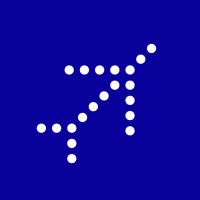Company Cyber Security Posture
NANA
NA Company Details
NA
NA
NA
NA
NA
NA
Scan still pending
NA
NA
Between 200 and 800
This score is AI-generated and less favored by cyber insurers, who prefer the TPRM score.
 NA Global Score
NA Global Score.png)

Company Scoring based on AI Models
| Model Name | Date | Description | Current Score Difference | Score |
|---|---|---|---|---|
| AVERAGE-Industry | 03-12-2025 | This score represents the average cybersecurity rating of companies already scanned within the same industry. It provides a benchmark to compare an individual company's security posture against its industry peers. | N/A | Between 200 and 800 |
Company Cyber Security News & History
| Entity | Type | Severity | Impact | Seen | Url ID | Details | View |
|---|
Company Subsidiaries

NA
Access Data Using Our API

Get company history
.png)
NA Cyber Security News
Navigating the Storm: Qantas Cybersecurity Breach and the New Reality for Travel Sector Investors
The cybersecurity breach at Qantas Airways, exposing data of six million customers, has become a watershed moment for the travel industry.
Lufthansa's first class suites finally take flight with beds, tablets and a 2-person sofa
MUNICH − German airline Lufthansa officially introduced its new first-class suites – eight years after they were announced and after some of ...
Infosys, Lufthansa Group, and Lufthansa Systems Collaborate to Accelerate Digital Innovation in the Aviation Industry
A strategic, long-term collaboration with Lufthansa Group (LHG), a global aviation group, and Lufthansa Systems GmbH (LSY), leading airline IT provider.
News Tech advances leave ship systems cyber-vulnerable, says DNV
A lack of interconnected shipboard equipment is making shipping a difficult target for cyberattack – but this situation is changing.
Lufthansa First Class Suites Finally Launch After 8-Year Wait
The Lufthansa first class suites are finally open for bookings. Passengers can experience the new level of flying on select routes between Munich and three US ...
Hawaiian Airlines' Cyber Attack: A Catalyst for Airline Cybersecurity Investment Opportunities
The attack targeted Hawaiian Airlines' IT systems, potentially compromising reservation databases, payment processing, and passenger data.
Global cyber outage blamed on security software update
George Kurtz, the CEO of CrowdStrike, the company behind the faulty "content upgrade" that has been blamed for the global tech outages and ...
Lufthansa group suspends Tel Aviv flights following Houthi attacks on Israel
None
On the Move: CTM, Blockskye, Lufthansa Group and Emburse
Julia Hillenbrand has been promoted to Vice President Sales EMEA Lufthansa Group Airlines and assumes responsibility for all commercial and ...

NA Similar Companies

AirAsia
It all starts here. 23 years ago, a dream took flight - shaping and forever changing the travel industry in Asia. The idea was simple: Make flying affordable for everyone. We made that dream happen. We started an airline in 2001. Today, we’ve evolved to become something much bigger. We’re now a wo

Garuda Indonesia
Carrying out the mandate as the national flag carrier of Indonesia for more than seven decades, Garuda Indonesia committed to connecting the archipelago while carrying the nation’s image to the world stage. With a top-notch fleet and a distinctive service concept highlighting Indonesian hospitality

Emirates
Based in Dubai, the Emirates Group employs over 103,363 staff from more than 160 nationalities. The Emirates Group’s extensive and diverse international portfolio includes the world’s largest international airline, Emirates, and one of the largest combined air services provider in the world, dnata.

IndiGo (InterGlobe Aviation Ltd)
How time flies. #18YearsOfIndiGo IndiGo is India’s largest passenger airline. We primarily operate in India’s domestic air travel market as a low-cost carrier with focus on our three pillars – offering low fares, being on-time and delivering a courteous and hassle-free experience. IndiGo has become

British Airways
As a global airline and the UK’s flag carrier, British Airways has been flying its customers to where they need to be for more than 100 years. The airline connects Britain with the world and the world with Britain, operating one of the most extensive international scheduled airline route networks to

Air Canada
Canada's largest airline, the country’s flag carrier and a founding member of Star Alliance, the world's most comprehensive air transportation network celebrating its 25thanniversary in 2022, Air Canada provides scheduled passenger service directly to 51 airports in Canada, 51 in the United States a

Frequently Asked Questions
Explore insights on cybersecurity incidents, risk posture, and Rankiteo's assessments.
NA CyberSecurity History Information
How many cyber incidents has NA faced?
Total Incidents: According to Rankiteo, NA has faced 0 incidents in the past.
What types of cybersecurity incidents have occurred at NA?
Incident Types: The types of cybersecurity incidents that have occurred include .
Additional Questions
What Do We Measure?
















Every week, Rankiteo analyzes billions of signals to give organizations a sharper, faster view of emerging risks. With deeper, more actionable intelligence at their fingertips, security teams can outpace threat actors, respond instantly to Zero-Day attacks, and dramatically shrink their risk exposure window.
These are some of the factors we use to calculate the overall score:
Identify exposed access points, detect misconfigured SSL certificates, and uncover vulnerabilities across the network infrastructure.
Gain visibility into the software components used within an organization to detect vulnerabilities, manage risk, and ensure supply chain security.
Monitor and manage all IT assets and their configurations to ensure accurate, real-time visibility across the company's technology environment.
Leverage real-time insights on active threats, malware campaigns, and emerging vulnerabilities to proactively defend against evolving cyberattacks.




